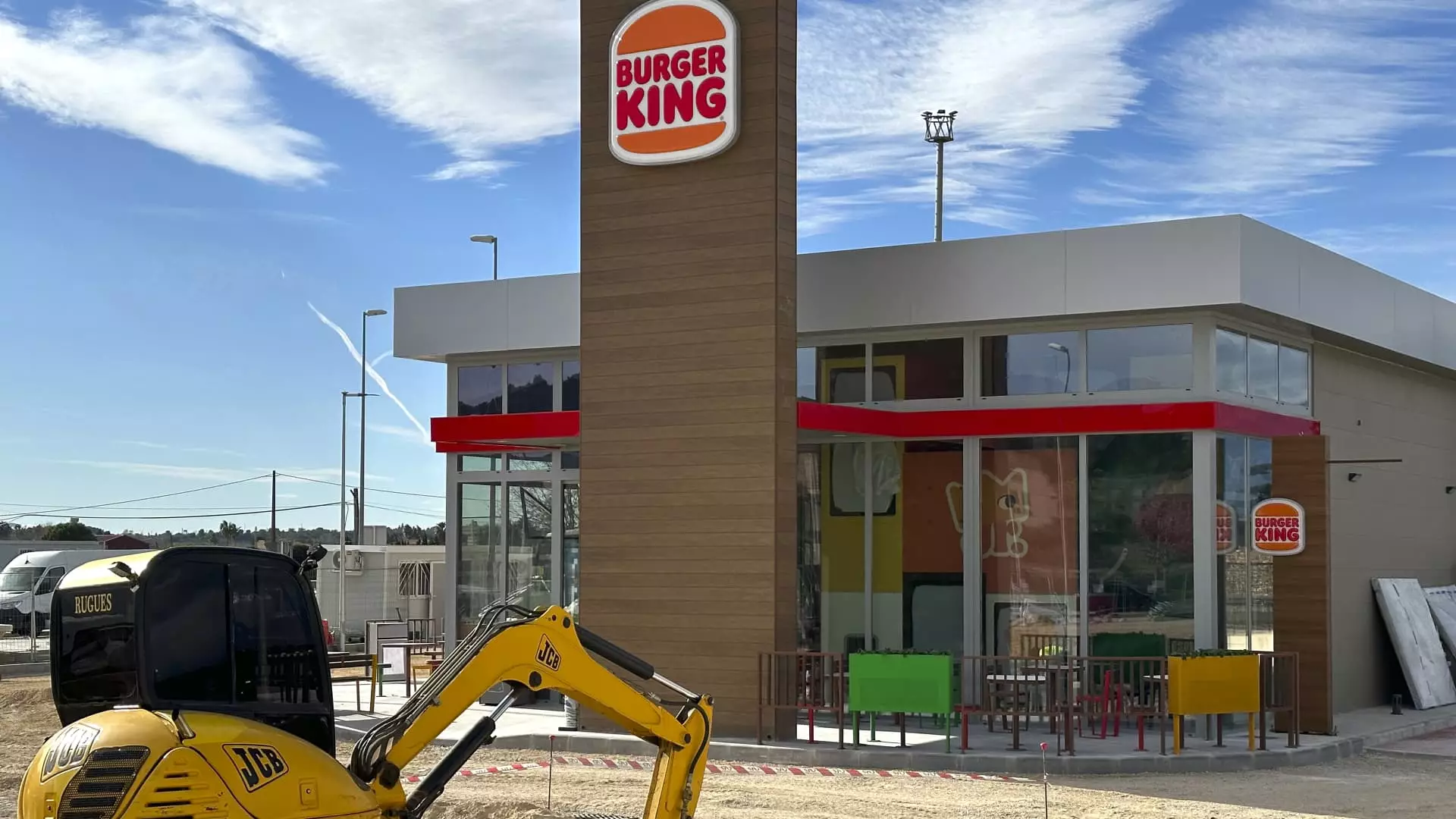Restaurant Brands International (RBI), the parent company of renowned fast-food chains like Burger King, Popeyes, and Tim Hortons, recently released its earnings report for the third quarter. The financial data sparked a considerable amount of concern in the market, as the company’s performance fell short of analysts’ expectations across multiple key metrics. While the beauty of the fast-food industry lies in its perceived resilience, RBI’s inability to drive growth, particularly in domestic same-store sales, reveals deeper issues regarding consumer behavior and operational strategies.
During this quarter, RBI reported earnings per share (EPS) of 93 cents on an adjusted basis, which narrowly missed the expected 95 cents. Revenue came in at $2.29 billion, trailing behind Wall Street’s expectation of $2.31 billion. This notable shortfall has broader implications beyond mere numbers. It raises questions regarding the company’s marketing effectiveness, consumer engagement, and competitive positioning within the notoriously ruthless fast-food market.
Same-store sales, a critical metric that reflects the health of a retail business, showed only a minuscule growth of 0.3% globally. Alarmingly, three of the four chains under RBI’s umbrella, namely Burger King, Firehouse Subs, and Popeyes, reported significant declines in their domestic markets. Burger King’s same-store sales were down 0.7%, contrary to expectations for stability. This indicates that even with an ongoing turnaround strategy, consumer interest in the brand remains lackluster.
Additionally, Popeyes and Firehouse Subs faced even steeper declines of 4% and 4.8%, respectively. Such figures are troubling, especially given the saturated nature of the fast-food sector, where brands fiercely compete for the shrinking dining-out dollar. The latest financial report suggests that consumers are not merely looking for fast meals but are increasingly sensitive to value, quality, and overall dining experiences.
RBI’s CEO, Josh Kobza, expressed optimism about early trends in the fourth quarter, noting improvements in same-store sales driven by enhanced marketing campaigns and rising consumer sentiment. His comments regarding reduced inflation, declining gas prices, and lower interest rates indicate a shift in the macroeconomic environment, which could favor the dining sector. However, optimism must be juxtaposed with caution; a few weeks of improved performance does not absolve RBI of the broader challenges it faces.
While the management’s acknowledgment of successful promotional offerings reflects a strategic pivot towards value, it also underscores a reactive approach to market pressures. The company’s efforts to promote budget-friendly deals—such as Popeyes’ $5 three-piece chicken meal—suggest a growing acceptance of a value-driven strategy in a time when consumers are prioritizing savings over indulgences. But will these promotions alter the long-term consumer perception of these brands or merely provide a temporary sales boost?
Amidst the mixed results, Tim Hortons emerged as a beacon of relative success, achieving a 2.3% increase in same-store sales. However, this performance still fell short of the anticipated 4.1% growth, illuminating the challenges even top-performing brands face in meeting analyst forecasts. This discrepancy raises questions about the reliability of industry estimates and the effectiveness of strategic initiatives aimed at attracting a loyal customer base.
RBI’s international sales, although slightly better with a growth of 1.8% compared to expectations of 2.2%, also reflect sentiments of caution. The global market is also becoming intensely competitive, and RBI’s brands must ensure they keep pace with not just sales figures but also evolving consumer tastes and local preferences.
In light of the current performance, RBI has adjusted its full-year system-wide sales growth outlook to a range of 5% to 5.5%, a downward revision from the previous estimate of 5.5% to 6%. This conservative adjustment underscores the company’s recognition of rising uncertainties in market demand and consumer preferences. The heightened competitive atmosphere within the fast-food sector further complicates RBI’s efforts to stabilize its business trajectory.
As we move forward, RBI must not only implement more robust marketing strategies but also maintain vigilance in understanding evolving consumer behavior. Ignoring these shifts could result in further value erosion and reputational damage in a market where every percentage point matters. As such, it remains to be seen if the company can successfully pivot to not only recapture lost growth but also foster a sustainable pathway to success in an increasingly complex and competitive environment.


Leave a Reply